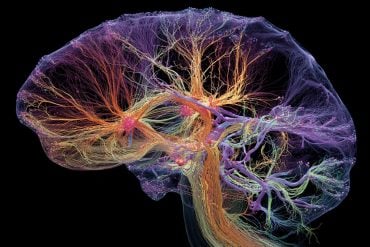Summary: Treating a mouse model of multiple sclerosis (MS) with the pregnancy hormone estriol could reverse myelin breakdown in the brain’s cortex, a primary area affected in MS.
MS results in inflammation that damage the myelin coating around nerve fibers in the brain’s cortex, leading to disability worsening. Current MS treatments only target inflammation and can’t repair myelin damage.
However, the new study found that estriol not only prevented brain atrophy but also induced remyelination, suggesting it could repair MS-induced damage.
Key Facts:
- Estriol, a type of estrogen hormone produced in pregnancy, has previously been found to reduce brain atrophy and improve cognitive function in MS patients.
- The research is a major advancement as cortical atrophy in MS patients is associated with permanent worsening of disability, such as cognitive decline, visual impairment, weakness, and sensory loss.
- This UCLA-led study is the first to demonstrate that estriol treatment can induce remyelination in the cortex, indicating it can potentially repair, rather than merely slow down, the destruction of myelin.
Source: UCLA
Treating a mouse model of multiple sclerosis with the pregnancy hormone estriol reversed the breakdown of myelin in the brain’s cortex, a key region affected in multiple sclerosis, according to a new UCLA Health study published in Laboratory Investigation.
In multiple sclerosis, inflammation spurs the immune system to strip away the protective myelin coating around nerve fibers in the brain’s cortex, hampering electrical signals sent and received by the brain.
Atrophy of the cortex in MS patients is associated with permanent worsening of disability, such as cognitive decline, visual impairment, weakness and sensory loss.

No currently available treatments for MS can repair damage to myelin. Instead, these treatments target inflammation to reduce symptom flare-ups and new nerve tissue scarring.
Previous UCLA-led research had found that estriol, a type of estrogen hormone produced in pregnancy, reduced brain atrophy and improved cognitive function in MS patients.
In the new study, researchers treated a mouse model of MS with estriol and found that it prevented brain atrophy and induced remyelination in the cortex, indicating that the treatment can repair damage caused by MS, rather than just slow the destruction of myelin.
This is the first study to identify a treatment that could repair myelin in the cortex, undoing some of the damage caused by MS.
Allan MacKenzie-Graham, an associate professor of neurology, is the study’s corresponding author. Other authors include Cassandra Meyer, Andrew Smith, Aitana A. Padilla-Requerey, Vista Farkhondeh, Noriko Itoh, Yuichiro Itoh, Josephine Gao, Patrick Herbig, Quynhanh Nguyen, Katelyn Ngo, Mandavi Oberoi, Prabha Siddarth and Rhonda R. Voskuhl, all of UCLA.
About this multiple sclerosis research news
Author: Allan MacKenzie-Graham
Source: UCLA
Contact: Allan MacKenzie-Graham – UCLA
Image: The image is credited to Neuroscience News
Original Research: Open access.
“Neuroprotection in cerebral cortex induced by the pregnancy hormone estriol” by Allan MacKenzie-Graham et al. Laboratory Investigation
Abstract
Neuroprotection in cerebral cortex induced by the pregnancy hormone estriol
In multiple sclerosis (MS), demyelination occurs in cerebral cortex, and cerebral cortex atrophy correlates with clinical disabilities. Treatments are needed in MS to induce remyelination.
Pregnancy is protective in MS. Estriol is made by the fetoplacental unit, and maternal serum estriol levels temporally align with fetal myelination.
Here, we determined the effect of estriol treatment on cerebral cortex in the preclinical model of MS, experimental autoimmune encephalomyelitis (EAE). Estriol treatment initiated after disease onset decreased cerebral cortex atrophy.
Neuropathology of cerebral cortex showed increased cholesterol synthesis proteins in oligodendrocytes, more newly formed remyelinating oligodendrocytes, and increased myelin in estriol-treated EAE mice. Estriol treatment also decreased loss of cortical layer V pyramidal neurons and their apical dendrites, and preserved synapses.
Together, estriol treatment after EAE onset reduced atrophy and was neuroprotective in cerebral cortex.







